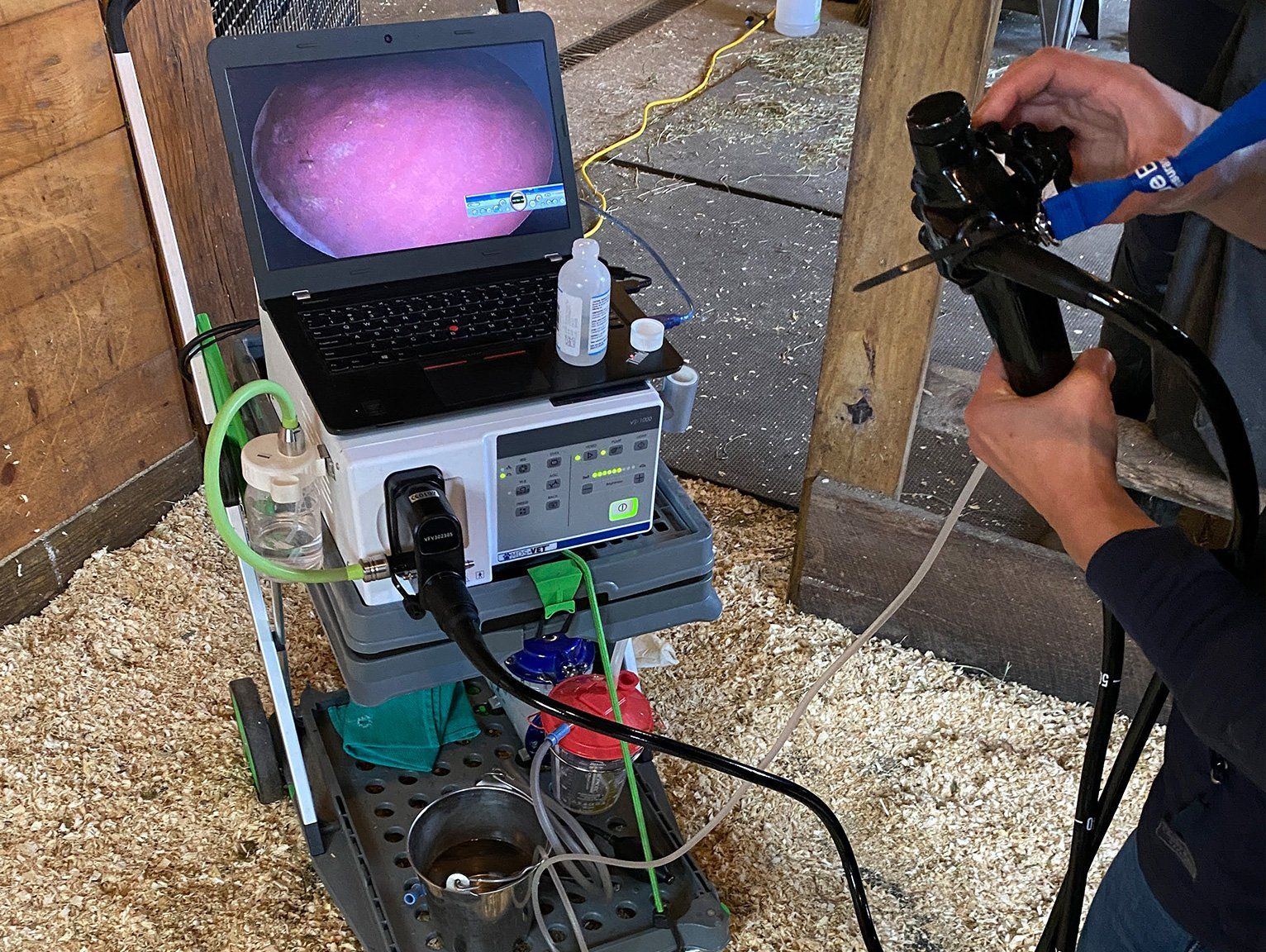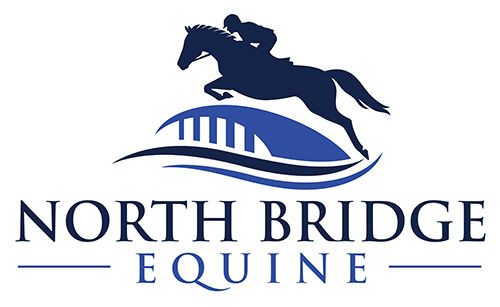Gastroscopy

Gastroscopy
What does a gastroscopy exam involve?
Gastroscopy for Detecting Gastric Ulcers in Horses
If we suspect your horse may have gastric ulcers, a gastroscopy can confirm or rule out their presence. This procedure involves passing a camera into the horse’s stomach to visually inspect various parts. By doing this, we can observe the location and severity of any ulcers present. There are two types of gastric ulcers, each requiring a specific treatment regimen. One of the primary benefits of gastroscopy is allowing us to tailor our treatment to your horse's specific condition.
Preparation for Gastroscopy:
To fully assess the horse’s stomach, it must be empty. Horses are grazing animals and typically have a stomach full of forage, except overnight when most horses fast. For a thorough examination, we need to fast your horse overnight. Most horses handle the lack of food without distress, though they might feel a bit jealous during morning feedings. No harm is done by this overnight fasting, and we schedule most of our gastroscopies as the first appointment of the day to keep the fasting duration as short as possible.
We recommend adding a muzzle during fasting to prevent your horse from eating shavings, remaining hay, or even manure, which may necessitate repeating the fasting and the gastroscopy on another day. The typical fasting protocol is:
1. PM hay and grain the night before as usual
2. Remove all hay from the stall no later than 9 PM
3. Apply a muzzle, if possible, to prevent eating shavings
4. No AM grain or hay on the day of the procedure
5. Remove water 2 hours before the procedure
The Gastroscopy Procedure:
The procedure itself is straightforward. We sedate your horse for comfort and to keep them still during the procedure. The gastroscopic camera is passed through the nose into the throat, swallowed down the esophagus, and into the stomach. The stomach is gently inflated with air to allow full visualization of the entire stomach. The different parts of the stomach are inspected, and photos are taken of any problem areas. Occasionally, we may take a sample of stomach fluid (more often on a recheck gastroscopy to check our therapy’s effectiveness) or a biopsy of a suspect area. Once the inspection is completed, the air is suctioned out of the stomach, and the gastroscope is removed. After waking up from sedation, your horse can resume its normal diet. We suggest waiting at least an hour after the procedure to feed, offering hay before grain.

